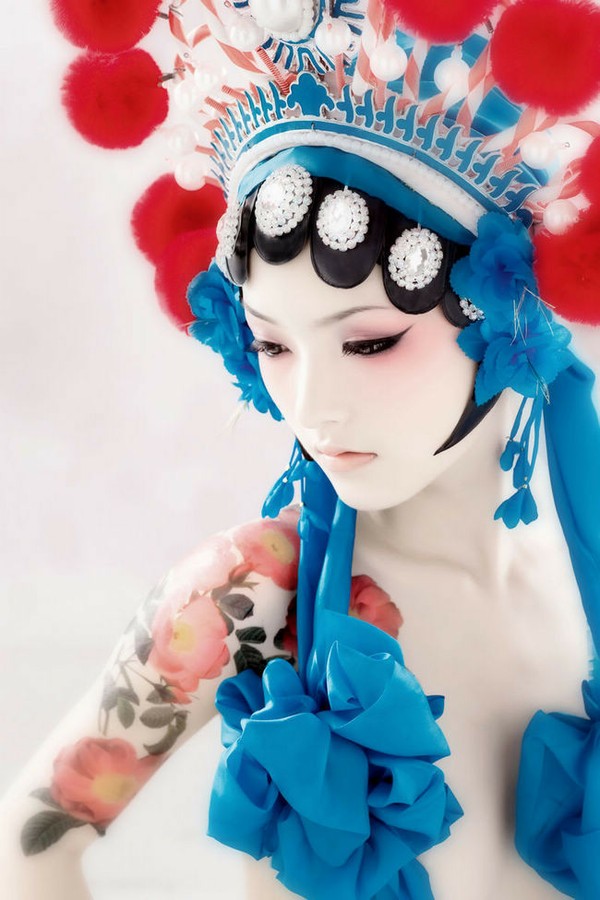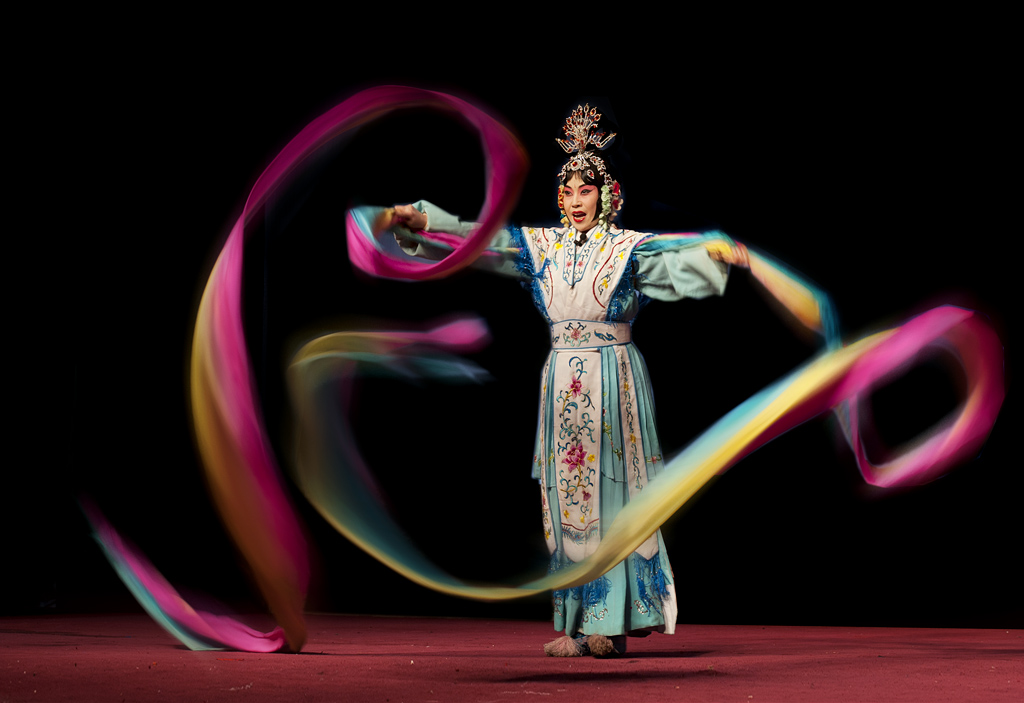Peking opera from Beijing
With its great music, singing and costumes, the Peking Opera is China's national show. Full of Chinese cultural facts, the opera presents the audience with an encyclopedia of Chinese culture, as well as unfolding stories, beautiful paintings, exquisite costumes, graceful gestures and martial arts. Since Peking Opera enjoys a higher reputation than other local operas, almost every province in China has more than one Peking Opera troupes. Opera is so popular among Chinese people, especially seniors, that even "Peking Opera Month" has been declared.

Peking Opera got a 200-year-long history,which was believed that Peking Opera gradually came into being after 1790 when the famous four Anhui opera troupes came to Beijing. Peking Opera fast development during the reign of Emperor Qianlong and the Empress Dowager Cixi under the imperial patron, eventually becoming more common to the common people.
In ancient times,the costumes were a garish collection of sharply contrasting colors to stand out on the dim stage illuminated only by oil lamps. Peking Opera is a harmonious combination of the Grand Opera, ballet and acrobatics, consisting of dance, martial arts and mime.
The Peking Opera band mainly consists of an orchestra and percussion band. The former frequently accompanies peaceful scenes while the latter provides the right atmosphere for battle scenes. The commonly used percussion instruments include castanets, drums, bells and cymbals. One person usually plays the castanets and drum simultaneously, which conduct the entire band. The orchestral instruments include the Erhu, Huqin, Yueqin, Sheng (reed pipe), Pipa (lute) and other instruments. The band usually sits on the left side of the stage.

Changing Faces
Peking Opera performers mainly have two types of facial decorations: masks and facial painting. The frequent on-stage changing of masks or facial makeup (without the audience noticing) is a special technique known as changing faces.
Changing faces is a difficult technique in operatic performance. It is considered to be a stunt that can only be mastered after extensive training. Face changing is also a special technique used to exaggerate inner feelings of characters, portray their dispositions, set off the atmosphere and improve effects. Facial changes expressing sudden changes in a character's feelings are done in four ways:
Blowing dust: The actor blows black dust hidden in his palm or close to his eyes, nose or beard, so that it blows back into his face.
Manipulating beard: Beard colors can be changed while the beard is being manipulated -- from black to gray and finally to white -- expressing anger or excitement.
Pulling-down masks: The actor can pull down a mask that has previously been hidden on top of his head, leaving his face red, green, blue or black to communicate happiness, hate, anger or sadness respectively.
Mop: The actor mops out the greasepaint hidden in his sideburns or eyebrows, around his eyes and nose, to change his facial appearance.
Xingtou
Peking Opera costumes are called Xingtou or, more popularly, Xifu in Chinese. The origins of Peking Opera costumes can be traced back to the mid-14th century when operatic precursors first began to experiment with large, ornate articles of clothing.
Since each dynasty in Chinese history had its own unique operatic costume, the number of costumes was too great for performers to master. Hence, artists and costume designers worked together to create costumes that would be unwieldy on stage and acceptable no matter when or where the action was supposed to take place. The stage image of some well-known historical figures, such as Guan Yu, Zhang Fei and Zhang Liang, were already fixed in the Ming Dynasty (1368-1644).
Main Roles in Peking Opera
Roles fall into four categories: Sheng, Dan, Jing and Chou. The roles have the natural features of age and sex, as well as social status, and are artificially exaggerated by makeup, costume and gestures.
1. Male Role (Sheng): civil, military; Lao Sheng (old man with a beard: dignified, polished, official, scholar); Xiao Sheng (young man, shrill voice, young warrior, young man of society, stature, elaborate dress), Wu Sheng (acrobatic male, extremely agile and physically skilled).
2. Female Role (Dan): Qing Yi (modest, virtuous), Hua Dan (flirtatious, playful), Gui Men Dan (young, married girl), Dao Ma Dan (strong woman, female general), Wu Dan (female acrobat), Lao Dan (old woman).
3. Painted Face Male (Jing): Spectators are usually startled by the appearance of the Jing. His facial colors symbolize the type of character: red = good, white = treacherous, etc.
4. Comedy Actor or Clown (Chou): dim-witted, amusing, rascal, occasionally slightly wicked.



